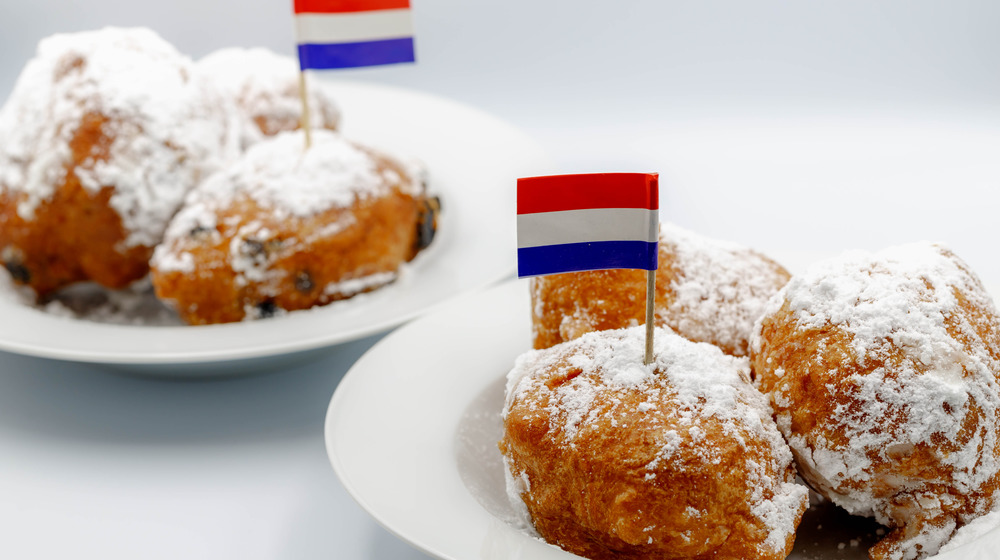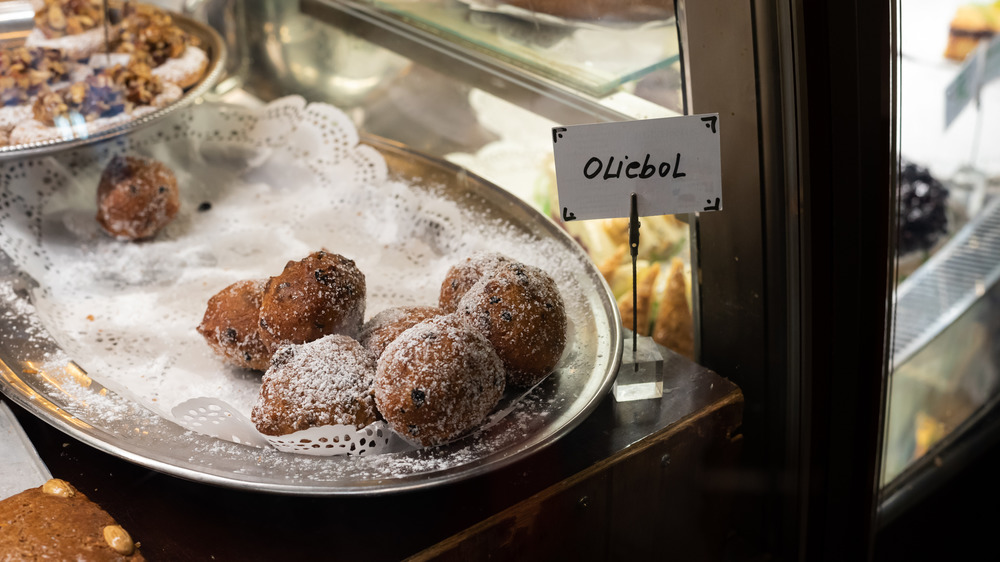Oliebollen Are The Dutch New Year's Treat You Didn't Know You Need
Sure, you could eat grapes, fish, or black-eyed peas for your traditional New Year's treat, but why not go with something a little sweeter for breakfast? Oliebollen — which literally translates to "oil balls" — are a precursor to the American donut, a gift from the Dutch that's often enjoyed in the Netherlands around New Year's, per Expats Haarlem.
Somewhat similar to a beignet, oliebollen are a round, fluffy, fried bread treat made from a few basic ingredients (flour, eggs, milk, and yeast) and sometimes filled with fruit like apples or raisins. Like a beignet, they're often served hot and covered in powdered sugar. While the dough itself isn't that sweet, the powdered sugar makes these warm treats a sweet delight.
While you can find food stands throughout the Netherlands serving oliebollen, you'll likely be hard-pressed to find this traditional Dutch fare served throughout most of the U.S. Luckily, though, it's not that difficult to make your own at home, with minimal ingredients, some deep-frying, and a little patience.
How to make your own oliebollen at home
The Spruce Eats offers an easy-to-follow oliebollen recipe that incorporates sugar, water, yeast, flour, eggs, milk, salt, and oil for the oliebollen — as well as powdered sugar and cinnamon for the garnish. The recipe requires minimal steps and is mostly mixing, allowing the dough to rise for an hour and then frying. You will need a deep pan for the frying, as well as a slotted spoon to easily retrieve the fried oliebollen from the hot oil. The whole process only takes about two hours (including letting the dough rise) and results in a delicious heap of oliebollen.
If you don't necessarily need the 10 servings the oliebollen recipe makes, you can rest assured that it will keep for two days at room temperature and heating them up again is as easy as popping them in the microwave or oven. And if you want to be extra fancy, do as the Dutch and serve your oliebollen alongside a glass of champagne, per Paste Magazine.
Oliebollen's interesting (if a little creepy) origins
While sharing your oliebollen with loved ones and friends, you might also share the origins of this New Year's Eve treat. According to Paste Magazine and Expats Haarlem, oliebollen originated hundreds of years ago among Germanic tribes living in what's now the Netherlands, during the Yule period. Eating oliebollen during the season was intended to ward off the pagan goddess Perchta, who was said to fly around with her evil spirits during this time of the year in search of food — sometimes going so far as to slice open the bellies of her victims with a sword in order to get at their already-consumed dinners. The tradition goes that eating oliebollen, meant your body absorbed so much fat from the deep-fried treats that Perchta's sword would slide right off of you.
The oliebollen recipe we use today stems from the first written record of oliebollen, from the 1600s, and the process hasn't changed much since. However, as Dutch families migrated to the U.S, the recipe would eventually evolve into the more modern American donut. Who knew? Now you have the recipe for a delicious treat and a great conversation starter.


